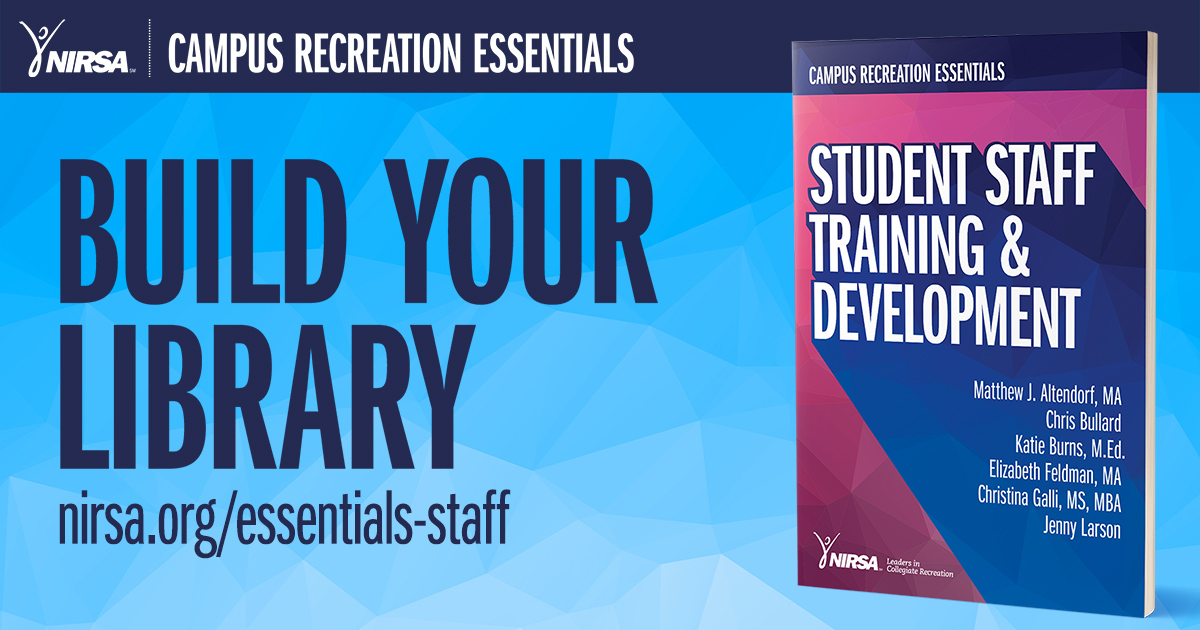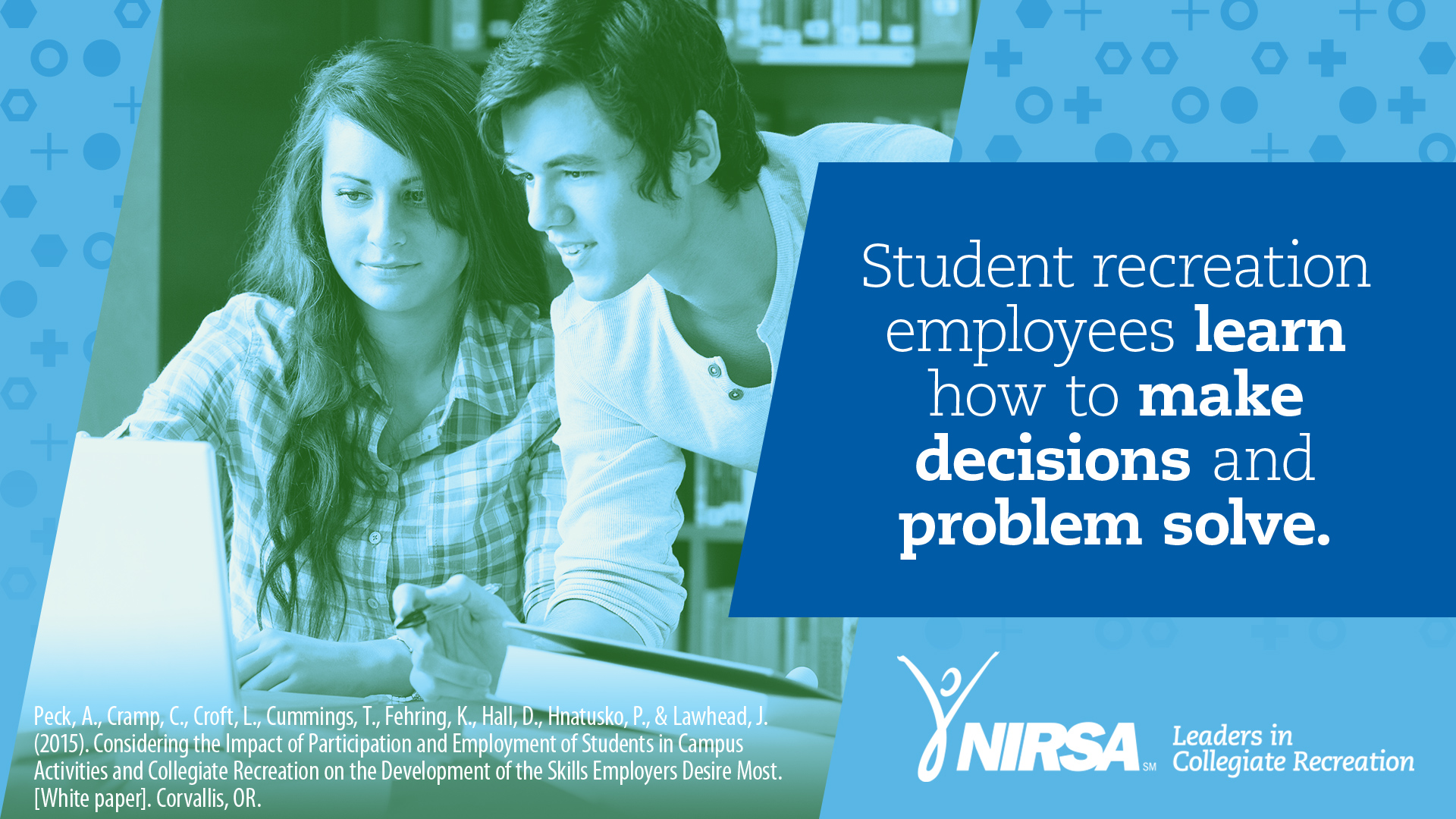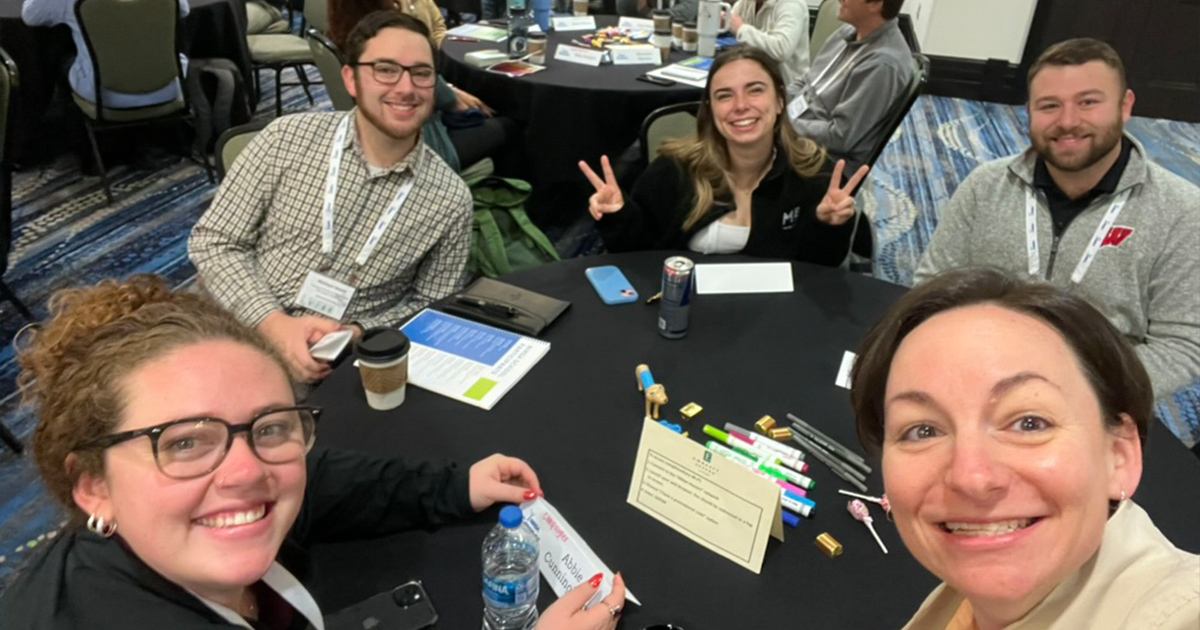Nearly fifty years ago, Dr. Laurence J. Peter—a Canadian educator—advanced his theory that within organizational hierarchies, individual employees tend to rise to a level of incompetence. While organizational structures have certainly evolved over the last half century, many of his points are still echoed in the current experiences of some professionals.
Help students avoid the Peter Principle
Campus recreation departments across North America often rely on student employees to carry out daily operations. Student staff in campus recreation facilities assist career professionals with critical tasks like opening and closing buildings, officiating intramural sports games, and so much more.
As these students graduate and move into professional job opportunities across many disciplines, we want their experiences working in campus recreation to prepare them to thrive in their careers.
Through their application of skills, student employees help recreation departments achieve lofty goals. However, when it’s working well, the relationship is also a mutually beneficial arrangement. “The department—as part of a higher education institution—has a responsibility to assist students with career readiness,” says Liz Seal, Associate Director and Workforce Analysis & Strategic Projects Manager at the University of California – Berkeley.
Liz knows a thing or two about student development in campus recreation. She helped to write the book on the topic: Campus Recreation Essentials: Student Staff Training and Development. Campus recreation is typically one of the largest employers on a college campus, and departments should have a strategy in place to address the co-curricular learning that can happen during student employment, says Matthew Altendorf, one of Liz’s coauthors and Manager of Strategy and Organizational Effectiveness at The Ohio State University. He echoes the point: “As an educational enterprise, we have a responsibility to educate students, especially those who are also on-campus employees.”
“Furthermore,” Matthew adds, “student learning, development, and success are part of the CAS Standards that should be the baseline of any successful recreation program.” It is easy to be drawn into the day-to-day, direct-service-functions that student staff members deliver in their roles (i.e., facility management, fitness programs, intramurals). But by taking the time to create a plan for intentional student development, departments and professionals can better advance these functional areas by empowering students to take initiative and learn through their own experiences.”
At Portland State University (PSU), “Our goal is to use recreational programming to help promote growth outside of the classroom,” says Chris Bullard, Senior Coordinator, Outdoor Programs at PSU. “We do this for our participants and even more so for our employees.”
Get the book
The truth is, however, “Not all supervisors are trained in supervising,” says Liz. Student employees attend universities to prepare themselves for the real world, which usually includes some form of professional work experience. “Supervisors have a responsibility to provide their student employees with foundational professional experiences such as recruitment, interviewing, training, job shadowing, resume writing, mentoring, receiving evaluations, and more,” says Liz.
“This book,” Liz says, “provides the opportunity for a supervisor of student employees to pick up something that is easy to read, and immediately identify areas of relevant content that can supplement their knowledge. The theory chapter can be very helpful for those who do not have a background in student development theory; it can fill in a gap on student learning for individuals whose expertise is in sports and recreation. There is also a chapter on implementation where readers will find specific tips and tricks that staff in different functional areas can use to begin their student development initiatives.”
“The book provides the foundations of student development and provides real world examples of how others are including development in their programs,” says Chris. There’s also a chapter on assessment that will be beneficial to supervisors new and old. The authors provide clear definitions on critical terms and suggest practical ideas for how to start your assessment in terms of your own student employment program. Campus Recreation Essentials: Student Staff Training & Development leads supervisors through the process of creating an intentional, effective training strategy grounded in student development theory. Written with examples of application in the field, guidance of good assessment practices, and suggested learning competencies, there are concrete takeaways for any campus recreation professional.
“This publication can be read cover-to-cover or used as a reference when one encounters a question in their work. It is an invaluable resource to any individual or department,” says Matthew. Members can get the book for only $29. Nonmembers can purchase copies for $49.
- For more information about NIRSA’s Campus Rec Essentials series, contact NIRSA Member Services Manager Megan Granholm.
- If you are interested in highlighting your campus or a NIRSA member’s achievements on your campus, pitch us your ideas.










